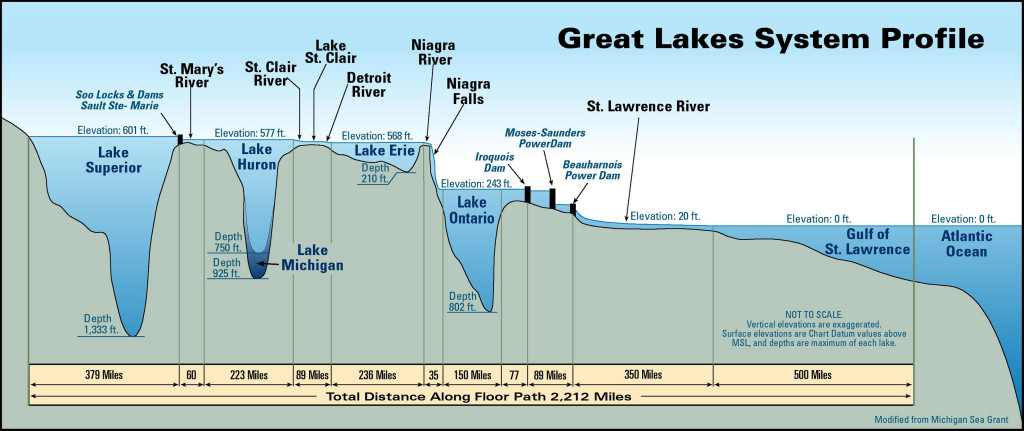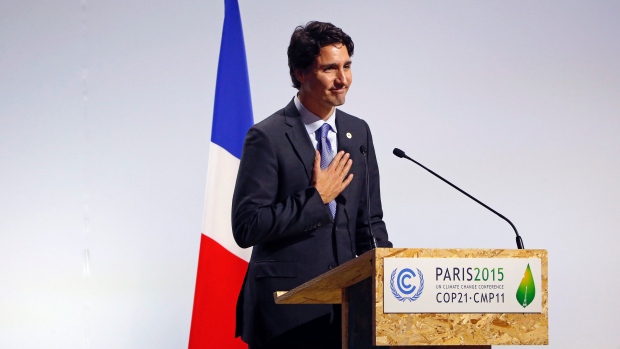December 27, 29015
BURLINGTON, ON
2015 was a big year for the environmental movement. It was a year of historic agreements, milestones, diversions, sensible policy making and oversights.
Internationally, the biggest environmental story was the United Nations Climate Change Conference in Paris which will be remembered both for its achievements and failures. Canada’s Minister of Environment and Climate Change, Catherine McKenna as well as the rest of the Canadian delegation deserve recognition for their efforts to negotiate the historic Paris Agreement. As the Paris delegates were debating, atmospheric CO2 levels passed the 400ppm milestone, which is a 42% increase since the start of the industrial age only 150 years ago. The last time the earth’s atmosphere had this much CO2 was two million years ago. Back then, the earth’s climate was 6C warmer, the arctic was ice free and sea levels were about 30M higher than they are today.
If all Paris Agreement signatories respect their voluntary self imposed, non-binding limitations, CO2 in the Earth’s atmosphere should stabilize near the same level they were 45 million years ago, when Greenland had crocodiles and palm trees. While the Paris agreement is most likely too little, too late to prevent extreme weather events and catastrophic environmental disasters over the long term, at least most of the world now agrees that climate change is a serious problem requiring action.
Most of the world has now pledged to reduce CO2 emissions to zero by 2070. Since this pledge is non-binding and voluntary, its achievement is highly unlikely. Paris Agreement signatories have agreed to meet every 5 years to review their progress (or lack of progress) and hopefully sign new agreements which may actually include mandatory limits and punitive measures for non-compliance. The Paris Agreement also includes a mechanism for countries hardest hit by climate change associated disasters to receive international aid and calls on developed countries to voluntarily share green technologies with less developed countries. The Paris Agreement isn’t much, but it is progress in the right direction.
Nationally, the biggest environmental story was the election of a new Liberal majority government, which appears to be far more aware and concerned about environmental issues than the previous Conservative majority government. As the Green Party candidate for Burlington in the last election, I must admit that I was dismayed that environmental issues which threaten to make our planet uninhabitable took a back seat to trivial debates over the clothing choices of some ethnic minorities. For most environmentalists, the words of the Justin Trudeau government are like a breath of fresh air. Hopefully the new government’s actions will prove to be equally refreshing.
Provincially, the Ontario Government finally passed three important laws to help protect the environment and environmental advocates. First, the Great Lakes Protection Act is intended to protect and restore the ecological health of the Great lakes-St. Lawrence River Basin and create opportunities for stakeholder participation in efforts to protect, preserve, restore and create habitat. Second, the Ontario Invasive Species Act creates a framework to criminalize the possession, trafficking and release of problematic alien species which threaten Ontario’s native ecosystems.

Great Lakes Protection Act is intended to protect and restore the ecological health of the Great lakes-St. Lawrence River Basin.
Finally the Ontario government passed the Protection of Public Participation Act, which will help protect free speech from Strategic Lawsuits Against Public Participation (SLAPP). Unfortunately this new law is not retroactive and comes too late to protect local residents Pepper Parr, Vanessa Warren, and Monte Dennis from a $100,000 Burlington Airpark libel lawsuit.
Municipally, the biggest environment story of 2015 in Burlington remains the Cootes to the Escarpment EcoPark System. In June 2013, local government and non-profit organizations in the Burlington-Hamilton area agreed to cooperatively manage nearly 1,900 hectares (4700 acres) of natural lands in Burlington and Hamilton to protect and restore what is arguably Canada’s most biologically rich and diverse ecosystem. This globally significant, environmental award winning urban park stretches from Hamilton Harbour, through Cootes Paradise to a 10-kilometre section of the Niagara Escarpment. The Cootes to the Escarpment EcoPark is the only part of escarpment not separated from Lake Ontario by a 400-series highway. The Cootes to the Escarpment EcoPark system is home to nearly a quarter of the country’s wild plants and more than 50 species at risk.
The park’s scientists and technicians are an important source of local environmental knowledge and expertise. I highly recommend participating in their educational and stewardship events. On May 30, 2014, Mr. John V. Holland generously donated a 15 hectare (37-acre) natural area in the Cootes to the Escarpment EcoPark system to the City of Burlington in honour of his wife Eileen to be managed as the new Eileen and John Holland Nature Sanctuary. On December 15, 2015, partners of the Cootes to Escarpment Ecopark System were able to finance the purchase of nearly 40 hectares (100 acres) of natural lands situated in the Greenbelt in Hamilton. Hopefully the Cootes to the Escarpment Ecopark system will continue to grow and inspire local landowners near the park to be responsible stewards of this biodiversity hotspot.
A second important local story is the City of Burlington’s new and improved approach to managing urban wildlife. The issue of urban coyotes especially has been emotional with many strong feelings on all sides of the issues. Councillor Jack Dennison and City of Burlington staff deserves credit and recognition for their successful effort to create wise and sensible city policies and by-laws to manage Burlington’s urban wildlife. They took the time to listen to all points of view, consulted the Ministry of Natural Resources experts, local environmental and citizens groups to develop a rational and sensible approach to managing Burlington’s urban wildlife in a way that reduces conflict, promotes greater understand and also stewardship. Burlington’s new by-laws and policies will reduce the risk to people from urban wildlife and at the same time reduce the risk to urban wildlife from people. Other municipalities would be wise to adopt Burlington’s rational and reasonable “Coyote Response Strategy.”
https://www.burlington.ca/en/services-for-you/wildlife.asp

As roads penetrate into the Amazon Rainforest, fires and deforestation follow. This image from August 5, 2007, shows scores of fires burning along roads and at the edges of already cleared areas of the Amazon in southern Para and northern Mato Grosso states in Brazil. The image and fire detections (marked in red) were captured by the Moderate Resolution Imaging Spectroradiometer (MODIS) on NASA’s Aqua satellite.
The biggest environmental story of 2015 remains the relatively unknown Holocene Mass Extinction Event. Five times in the past, something has happened which killed off most of the life on earth. These events are known as Mass Extinctions. Each past mass extinction event required millions of years before new species evolved and the earth recovered to its former level of biodiversity. The last mass extinction event happened 65 million years ago, wiped out the dinosaurs, gave rise to the dominance of mammals and eventually the appearance of modern humans.
While most biologists have been warning that a mass extinction event was likely underway, they lacked empirical evidence that could quantify the current mass extinction’s scale and timeline. In 2015, a new study by a group of scientists including Paul Ehrlich, the Bing Professor of Population Studies in biology and a senior fellow at the Stanford Woods Institute for the Environment, published in the journal Science Advances, based on empirical peer reviewed evidence which proves that species are disappearing much faster than the historical background rate. The study’s best case scenario is that 75% of all species on the planet will become extinct within 2000 years, with most of the rest ceasing to play a significant role in the natural services which scrub CO2 and pollutants from the air, clean the water and rejuvenate the soil. The study’s worst case scenario predicts that 75% species will become extinct in less than 200 years. Exponential human population growth with increased per capita consumption has altered or destroyed natural habitats and ecosystems. The main human impacts were caused by
• Land clearing for farming, logging and settlement
• Introduction of invasive species
• Carbon emissions that drive climate change and ocean acidification
• Toxins that alter and poison ecosystems

A parking lot today – it was once part of some of the very best farmland in the province from which produce was shipped around the world.
Residents of Burlington need not travel far to see the evidence of the Holocene mass extinction event. All of Burlington used to be as richly biologically diverse as the Cootes to the Escarpment EcoPark System. Today in Burlington, most of the Carolinian forests have been cut down and most of the prairies have been paved over. Nearly every tree, shrub, flower and grass in that people in Burlington deliberately cultivate is an alien species. Nearly every ornamental garden in Burlington has at least invasive species that will soon be banned by Ontario’s new invasive species law.
Our urban natural areas are mostly overrun with alien invasive species which have escaped our ornamental gardens and our urban creek floodplains filled with hundreds of tons of trash in the form of tires, couches, car batteries, television monitors, plastic, broken glass… I know because I have literally removed a few tons of trash myself. Our local habitat loss problem is part of the global habitat loss problem and can’t be blamed on anyone else but ourselves.
I wish I could end this story on environmental stories of 2015 on a positive note. But I can’t. We are obviously ruining the planet and most people don’t care. I am certain that in the future, our grandchildren and their grandchildren will look back to this point in time and wonder how we could be so irresponsibly destructive and uncaring about the future of the earth’s biosphere. I wonder too. If anyone is reading this article 100 years from now, I’d like to apologize to you. We could have and should have done much better, but we were too distracted by a few people’s clothing choices and too busy in our daily lives to give the future of the earth any serious thought or consideration.
Sorry.



















Right on Vince. Great but somewhat depressing article.
The other promise by Trudeau is the end of the First Past the Post electoral system. We must now be on guard that we get a fair citizen involved consideration of a new system. Personally I believe a Proportional Representation system is the most democratic one. This would hopefully lead to a more co-operative style of governance between the federal parties as opposed to the Harper style of “any means justifies the end” style.
I would like to see the picture of the ongoing destruction in the Amazon rain forest. The one shown is obviously of south east Asia.